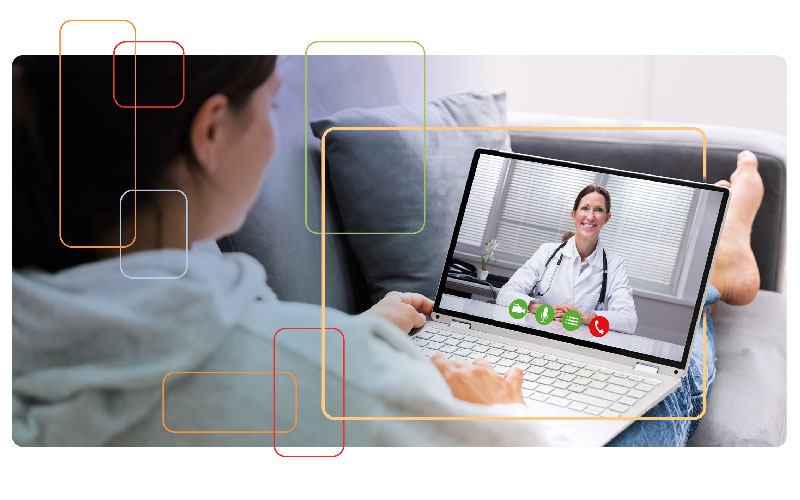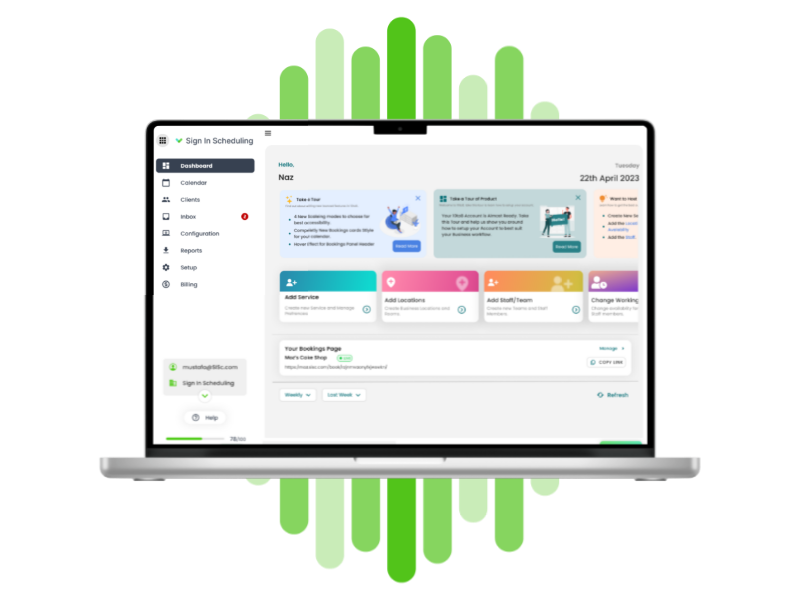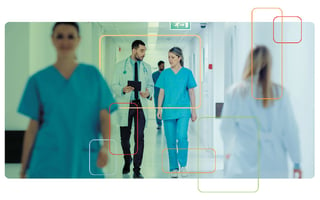Medical doctors are some of the busiest professionals in the world. They hold critical...
Behind the scenes of Healthcare: a data-driven look at appointment trends
Here at 10to8 we love data — but are statistics the final piece in the puzzle of patient satisfaction? For instance, did you know that the NHS could save over £48,000,000 with patient scheduling? Satisfaction is a critical component of quality care, and healthcare providers are always searching for ways to enhance this experience.
We’ve analyzed the anonymized data of thousands of healthcare providers to gain valuable insights into patient behavior. From wait times to no-show rates, we’ve crunched the numbers to better understand how appointment scheduling technology is shaping the industry and uncover the key metrics that drive healthcare success.
So, if you're ready to unlock the secrets of patient satisfaction, let's dive into the world of appointment statistics in healthcare!
Quick Navigation
How appointment data can optimize healthcare operations
Our healthcare customers have come to us with challenges from crowded waiting rooms to staff burnout. With healthcare being so important, it was critical to identify the issues quickly and find effective solutions. As such, we have plenty of experience with the typical obstacles in healthcare:
- A busy backlog: Arguably one of the most common challenges healthcare professionals face is an unmanageable backlog. This can lead to long patient wait times and low levels of satisfaction.
- High DNA rates: No-shows can not only hinder staff productivity but they take up a spot that could be used to serve somebody that really needs care.
- Managing multiple locations: Efficiently managing multiple hospitals can be tough.
- Staff being unable to attend meetings and training: Many healthcare workers miss out on important meetings or training sessions because they are unable to leave their stations.
- High staff burnout: It’s no secret that the healthcare industry is tough. But with an unmanageable workload and no time for proper breaks, staff burnout can be a real struggle.
- Accessible bookings: Hospitals need to be inclusive and meet the needs of the elderly, disabled, and vulnerable. With limited capabilities from online tools, this is proving challenging.
- Managing appointments online and also offering walk-ins: Hybrid clinics are a fairly new concept brought about by COVID-19, however, they are growing in popularity. Many clinics wish to offer both of these types of appointments and find it difficult to do it simultaneously.
Harnessing data to transform patient care
In today's fast-paced healthcare industry, appointments are more than just a scheduling task. They are a critical component of the patient experience and an essential part of healthcare operations. So, without further ado, here are some of the fascinating healthcare statistics that highlight the ongoing challenges and opportunities in healthcare.
The NHS could save ~£48,360,000 per month with self-service scheduling
In outpatient clinics in the UK, there is an average of 7.6% no-show rate. This equates to about 650,000 missed appointments per month in outpatient clinics alone. In comparison, the NHS clinics using 10to8 are experiencing around a 3% ‘Did Not Attend’ rate.
.jpg?width=800&height=800&name=Healthcare%20Statistics%20(2).jpg)
With missed appointments costing the NHS £120 each, reducing DNAs to 3% could result in a colossal saving of £48,360,000 a month by introducing an online scheduling tool.
62% potential DNA reduction at UK outpatient clinics after introducing self-service scheduling
Healthcare organizations using 10to8 have seen a 62% decrease in no-shows since adopting online scheduling. In fact, some of the organizations we work with in both UK and US healthcare have average no-shows of just 5%, 78% lower than the worldwide average of 23%.
.jpg?width=800&height=800&name=Healthcare%20Statistics%20(4).jpg)
The direct correlation between sending multi-channel appointment reminders and no-shows is palpable. Patients who received appointment reminders via SMS and email were significantly less likely to miss appointments. Plus, simply allowing patients to initiate their own bookings and pick a time that works for them, can seriously decrease no-shows.
Reducing DNA rates in the US could save up to $54,000,000 per million appointments
Healthcare organizations in the US experience DNA rates of up to 30%. This can cost up to $150 billion per year, with each time slot missed costing around $200. Eliminating these no-shows would allow staff to provide a much better experience to their patients and effectively utilizing reminders can make a dramatic dent in these numbers.
.jpg?width=800&height=800&name=Healthcare%20Statistics%20(1).jpg)
Using online scheduling could reduce DNA rates by up to 90%. That means, for every million healthcare appointments booked, medical providers could save $54,000,000 by switching to online scheduling.
Slashed admin: Over 40% of appointments worldwide were patient-initiated in 2022
Managing high volumes of admin is a significant problem for healthcare organizations. But, in 2022, patients took on almost half of the admin that fell on clinical staff before implementing self-service scheduling. This significant reduction in administrative workloads has helped streamline operations, increase efficiency, and ultimately provide better care.
.jpg?width=800&height=800&name=Healthcare%20Statistics%20(5).jpg)
Some of the healthcare clients that use 10to8 have seen patient booking adoption of over 40% for their online booking system. The North East London NHS Foundation Trust saves 28 days' worth of admin time each month by adopting online scheduling, a clear indication of just how valuable self-schedule is.
In the NHS, 60% of appointments are patient-initiated
In comparison, the NHS has an even higher rate of patient-initiated appointments than around the world. This indicates that patients in the UK are more actively involved in their healthcare and are more likely to take the initiative to seek medical attention when needed.
This could be attributed to various factors, such as access to universal healthcare services in the UK, the culture of seeking medical advice when feeling unwell, and the availability of information on health and healthcare services.
.jpg?width=800&height=800&name=Healthcare%20Statistics%20(3).jpg)
Chelsea and Westminster NHS Foundation Trust was one of the first organizations in the UK to offer multiple appointment booking methods. With the help of 10to8, they created a system where patients could book online, walk in, or book over the phone, and the clinic could keep track of all these appointments in one place.
Over 40% of all bookings were made for remote consultations
Telehealth has more than tripled in popularity since 2018. The COVID-19 pandemic did accelerate this, as many patients have sought to minimize in-person visits to healthcare facilities. Nonetheless, even post-pandemic, patients and staff are still reaping the benefits.
.jpg?width=800&height=800&name=Healthcare%20Statistics%20(6).jpg)
In 2022, 40% of all bookings were booked for remote delivery. By giving patients the option of attending their healthcare appointments from the comfort of their own homes, practices are making healthcare much more available for patients. This is especially true when paired with 10to8’s voice booking system, this can also make appointments much more accessible.
What have these healthcare statistics shown us?
1. Technology streamlines patient experience
Gone are the days when the only way to book a doctor's appointment was to sit in a hold queue for 30 minutes with your local practice. In fact, over 59% of people are frustrated with being put on hold when trying to book an appointment. Further studies have shown that over 73% of all patients want to be able to book medical appointments online.
2. Hybrid clinics and virtual wards are here to stay
Despite the rapid rise of telehealth, only 27% of people view it as an alternative to in-person appointments. The ability to easily combine remote consultations and in-person appointments is a must.
3. Effective appointment reminder has a direct correlation to DNAs
Around the world, over 91% of people own a smartphone. So, it makes sense that appointment reminders would be an effective way of ensuring patients attend their appointments.
Reminders can also allow for convenient appointment management. With an average patient wait time of around 24 days, timely reminders can make all the difference between a patient showing up or canceling their appointment in time to give it to someone else.
4. Healthcare appointments in healthcare have to be accessible
One in seven people around the world has a disability. When it comes to online scheduling, accessibility is incredibly important, especially for healthcare providers.Ensuring you are using inclusive software in your practice — such as ensuring that it is WCAG compliant and enabling a voice booking system - can make a huge difference. It can also prevent alienating an entire group of patients from online bookings.
5. Staff burnout aided by admin-free patient bookings
Throughout the start of the pandemic, almost 40% of healthcare workers either quit their job or considered leaving the healthcare industry completely. Even since then, around 3% of the healthcare workforce quit their jobs each month due to burnout.Guaranteeing a stable work-life balance is not only important for staff well-being but also to ensure reliable patient care. Plus, looking after your workers is just as important as looking after your patients.
Overall…
Through these statistics, we’ve gained a much better understanding of the role online scheduling can play in healthcare. We’ve seen firsthand how reminders can lessen DNAs and how online scheduling can reduce staff burnout. We’ve seen how patient booking can allow clinics to allocate resources more efficiently while reducing costs, and providing better patient satisfaction. It’s clear what we’ve learned will shape the future of healthcare.
If you’d like to learn more about how appointment scheduling could benefit your healthcare practice, speak to one of our scheduling specialists today. Or check out some of our success stories from our existing customers in education.






Blog comments